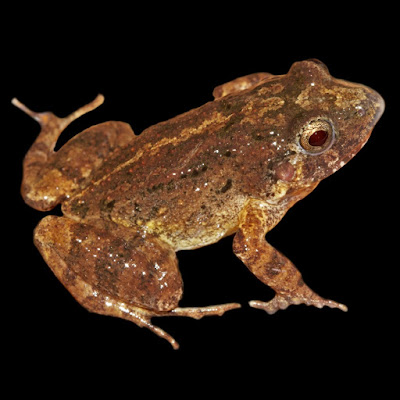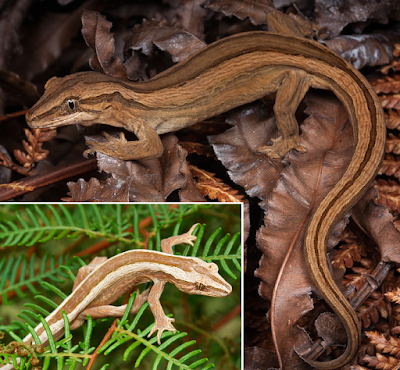[Most Recent Entries] [Calendar View]
Friday, December 25th, 2020
| Time | Event | ||||
| 3:40a | [Herpetology • 2020] Adenomera glauciae • A New Forest-Dwelling Frog Species of the Genus Adenomera (Anura: Leptodactylidae) from Northwestern Brazilian Amazonia
Abstract We describe a new species of the South American frog genus Adenomera, based on external morphology, color patterns, advertisement call, and mtDNA sequences. The new species was collected from the Japurá River basin in northwestern Brazilian Amazonia and is distinguished from all congeners by the combination of large snout–vent length (SVL), toe tips unexpanded, presence of antebrachial tubercle on underside of forearm, and by a multi-note advertisement call composed of non-pulsed notes. This new species is part of the A. lutzi clade together with a candidate new species known as Adenomera sp. P and A. lutzi. The three species have the largest SVL in the genus. The presence of toe tips fully expanded and a single-note advertisement call distinguish A. lutzi from the new species. Acoustic and morphological data are still required to assess the taxonomic identity of Adenomera sp. P. Our new species of Adenomera is the third anuran species described from the Solimões-Japurá interfluve. This flags this poorly known region of lowland forests as an important area of species richness in northwestern Amazonia.
Adenomera glauciae, new species Etymology.— The specific epithet is a matronymic derived from Glaucia M. Funk Pontes, Brazilian herpetologist and former curator of the amphibian and reptile collections of MCT-PUCRS from 2007 to 2019. We name this species in honor of our dear friend in recognition of her scientific and curatorial contributions to the Brazilian herpetofauna and as a tribute to the many hours of work shared through the years. Thiago R. de Carvalho, Pedro I. Simões, Giussepe Gagliardi-Urrutia, Fernando J. M. Rojas-Runjaic, Célio F. B. Haddad and Santiago Castroviejo-Fisher. 2020. A New Forest-Dwelling Frog Species of the Genus Adenomera (Leptodactylidae) from Northwestern Brazilian Amazonia. Copeia. 108(4); 924-937. DOI: 10.1643/CH-19-329 | ||||
| 6:19a | [Herpetology • 2020] Toropuku inexpectatus • Earning Your Stripes: A Second Species of Striped Gecko in the New Zealand Gecko Genus Toropuku (Gekkota: Diplodactylidae)
Abstract The New Zealand diplodactylid gecko genus Toropuku is currently monotypic, but the sole member of the genus, T. stephensi, is distributed in two disjunct, geographically distant regions of New Zealand – the islands of Cook Strait (which includes the type locality, Stephens Island), between New Zealand’s North and South Islands, and the Coromandel Peninsula, in the northeastern North Island. Previously published phylogenetic results, based on three total individuals, recognized substantial—possibly species-level—diversity between these disparate localities, although no taxonomic decisions were made at that time. More recently, additional animals have been found on the Coromandel Peninsula. We here present phylogenetic and morphological evidence based on this expanded dataset to formally describe the populations on the Coromandel Peninsula as a new species, Toropuku inexpectatus sp. nov. The specific epithet refers to the species’ surprise discovery in a herpetologically well-surveyed area. The recognition of T. inexpectatus sp. nov. as a distinct species has implications for the conservation status of T. stephensi, which is now considered restricted to three islands in Cook Strait. Keywords: Gekkota, taxonomy, Toropuku inexpectatus sp. nov., Toropuku stephensi, mainland relics, disjunct, conservation
Rodney A. Hitchmough, Stuart V. Nielsen and Aaron M. Bauer. 2020. Earning Your Stripes: A Second Species of Striped Gecko in the New Zealand Gecko Genus Toropuku (Gekkota: Diplodactylidae). Zootaxa. 4890(4); 578–588. DOI: 10.11646/zootaxa.4890.4.9 |
| << Previous Day |
2020/12/25 [Calendar] |
Next Day >> |





